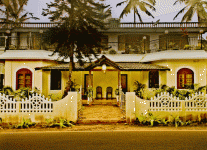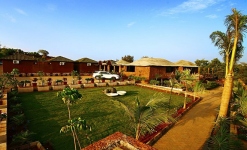Email Us : sales@bestgoadeals.com
Talk to Local Goa Expert
9823472999 / 9823727999
9823472999 / 9823727999


Planning a Goa Vacation? Download this Guide to Assist You. Plan Your Trip with an Expert Click To Download PDF,
or Just Click Here to Chat with a Goa Travel Expert
or Just Click Here to Chat with a Goa Travel Expert
- Home
- Hotels in Goa
- Customise your stay
- BGD Specials

- Goa Guide
- About Us
- About Goa
- Temples of Goa
- Shri Brahma Temple
- Shri Manguesh Temple
- Shri Naguesh Temple
- Shri Shantadurga Temple, Kavlem
- Shri Gopal Ganapathi, Farmagudi
- Shri Mhalasa Narayani Temple, Mardol
- Shri Mahadev Temple
- Shri Navdurga Temple
- Shri Morjee Temple
- Shri Mahalaxmi Temple
- Shri Kamakshi Temple
- Shri Vithal Temple
- Shri Ramnathi Temple
- Shri Maruti Temple
- Shri Vijaydurga Temple
- Shri Bhagwati Temple
- Shri Rudreshwar Temple
- Shri Chandranath Temple
- Shri Damodar Temple
- Shri Datta Mandir
- Shri Devaki Krishna Ravalnath Temple
- Shri Gomanteshwar Devasthan Brahmapur
- Shri Kalika Devi Temple
- Shri Mallikarjun Temple
- Shri Saptakoteshwar Temple
- Shri Devi Sharvani
- Shri Saunsthan Gokarn Partagali Jeevottam Math
- Shri Saunsthan Gondpaddchaiya Kavie Math
- Shri Ananta Temple
- Shri Bodgeshwar Temple, Mapusa
- Shri Maha Ganapti Mahamaya Temple
- Shri Laxminarsimha Temple, Veling, Ponda
- Churches of Goa
- Mary Immaculate Conception Church, Panjim
- Reis Magos Church
- Basilica of Bom Jesus, Old Goa
- Se Cathedral
- Church of St Francis of Assisi
- Church of St. Francis Xavier
- Church of St Paul
- Nossa Senhora dos Milagress Church
- Nosso Senhora do Socorro Church
- Chapel of Our Lady of the Mount
- Church of the Carmelites
- Chapel of St. Catherine
- Church Of St. Monica
- Royal Chapel Of St. Anthony
- Church Of St. Cajetan
- Church Of The Cross Of Miracle
- Lady Of The Mount
- Reis Magos Church
- Church of Mary Immaculate Conception
- Church of St. Anne
- Church of Holy Spirit
- Church Of Mae De Deus
- Church of Our Lady Of Rosary
- Church of St Augustine
- Church of St Alex
- Rachol Seminary
- Church of Nossa Senhora De Monte
- Convent and the Church of the St. John of God
- Church of Our Lady of Miracles Milagres
- Church of Our Lady of the Rock of France
- Chapel of St Sebastian
- Chapel of St. Jerome
- Our Lady of Mount Carmel Church
- Our Lady of Mercy
- Swiss Chapel
- Church Of St Andrew
- Mae de Deus Church
- Nossa Senhora do Amparo Church
- Sao Jeronimo Church
- Sgrada Familia Church
- Nossa Senhora da Piedade church
- Espirito Santo Church
- The Church of Nossa Senhora da Graca
- Nossa Senhora das Merces Church
- Nossa Senhora da Imaculada Conceicao Church
- Nossa Senhora dos Milagres Church
- Sao Francisco Xavier Church
- The Church Of Bom Jesus
- Santissima Trinidade Church
- Nossa Senhora do Bom Sucesso Church
- Nossa Senhora do Rosario Church
- Nossa Senhora dos Remedios Church
- Sao Joao Evangelista Church
- Mae dos Pobros Church
- Santa Ana/Santana Church
- Santa Catarina de Alexandria Church
- Sao Miguel, Arcanjo Church
- Nossa Senhora do Mar Church
- Santo Antonio Church
- Imaculada Conceicao Church
- Nossa Senhora da Penha de Franca Church
- Sao Jose Church
- Sao Joao Baptista Church
- Nossa Senhora dos Enfermos Church
- Santa Cruz Church
- Nossa Senhora das Neves Church
- Nossa Senhora da Victoria Church
- Nossa Senhora da Ajuda
- Nossa Senhora do Rosairo
- Nossa Senhora, Mae de Deus Church
- Salvador do Mundo Church
- Nossa Senhora da Saude Church
- Sao Joao da Cruz Church
- Santa Inez Church
- Santo Estevao Church
- Anjo Custodio Church
- Sao Bartolomeu Church
- Sao Bras Church
- Sao Jacinto Church
- Sao Jose de Areal church
- Sao Matias Church
- Sao Pedro Church
- Nessa Senhora da Assuncao Church
- Nossa Senhora do Pilar Church
- Sao Lourenco Church
- Nossa Senhora, Mae dos Pobres Church
- Sao Cristovao Church
- Sao Roque Church
- Sao Sebastiao Church
- Nossa Senhora, Consolacao dos Perseguidos Church
- Santa Isable de Portugal Church
- Sagrado Coracao de Jesus Church
- Santo Cristo Church
- Nossa Senhora da Gloria Church
- Santo Andre Church
- Nossa Senhora Assunta Church
- Nossa Senhora do Socorro Church
- Nossa Senhora de Belem Church
- Nossa Senhora da Esperanca Church
- N. Senhora, Auxilio dos Cristaos Church
- Nossa Senhora das Merces
- Sao Francisco de Assis Church
- Sao Joao Facundo Church
- Ss. Filipe & Tiago Church
- Nossa Senhora de Fatima Church
- Nossa Senhora da Fuga Church
- Santo Aleixo Church
- Nossa Senhora do Desterro Church
- Santo Antonio de Lisboa Church
- Nossa Senhora da Graca Church
- Sao Diogo Church
- Santa Rita de Cassia Church
- History Of Goa
- Beaches In Goa
- Baga Beach
- Palolem Beach
- Benaulim Beach
- Agonda Beach
- Cavelossim Beach
- Mobor Beach
- Betalbatim Beach
- Arossim Beach
- Varca Beach Goa
- Bogmolo Beach
- Colva Beach
- Vagator and Chapora Beach
- Anjuna Beach
- Sinquerim Beach
- Mandrem Beach
- Miramar Beach
- Dona Paula Beach
- Vainguinim Beach
- Candolim Beach
- Caranzalem Beach
- Keri Beach
- Coco Beach
- Description of Goa
- Places In Goa
- Fun and Frolic Goa
- Goa : Tourist Destination
- Old Aged Homes
- Heritage Sites In Goa
- Wildlife In Goa
- Museums Art Galleries In Goa
- Monuments In Goa
- Dams & Water Reservoirs
- Map of Goa : Download the Goa Map here
- Goa Tourism Development Corportation (GTDC) Goa
- Travel Distances within Goa
- Traveller Tips
- Temples of Goa
- Goan Culture & Events
- Things To Do In Goa
- Adventure In Goa
- Surfing In Goa
- Water Sports in Goa
- Parasailing in Goa
- Dolphin trips Goa
- Fishing In Goa
- Crocodile tours
- Yacht Tours
- Scuba Diving In Goa India
- Hiking and Trekking Goa
- Microlite Flying Goa
- Other Activities in Goa
- Catamaran Sailing Goa
- Speedboat Rides Goa
- Water Skiing in Goa
- Windsurfing in Goa
- Jet-skiing in Goa
- Sports In Goa
- Night Life In Goa
- Attractions In Goa
- Leisure Cruises in Goa
- Luxury Cruises in Goa
- Casino Cruises in Goa
- Barracuda Diving in Goa
- Adventure In Goa
- Car Hires in Goa
- Real Estate in Goa
- Partner Links
- RoomEscape in Goa
- Goa Best Sightseeing Options
- Our Services
- GTDC Hotels
- Contact




 Goa Guide
Goa Guide 














